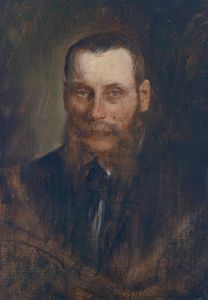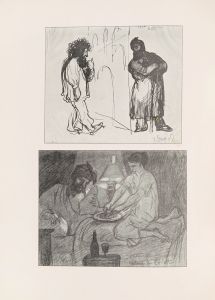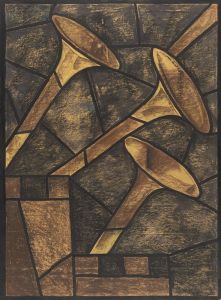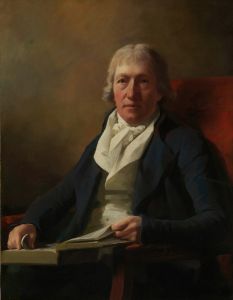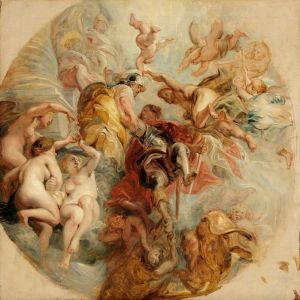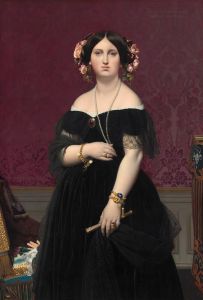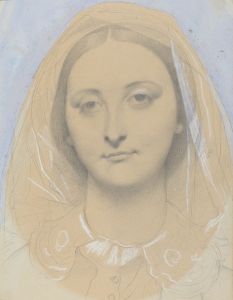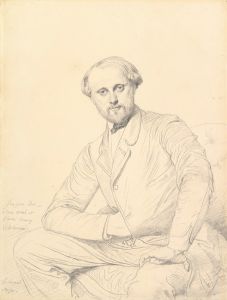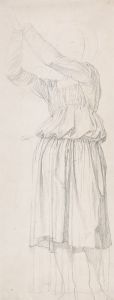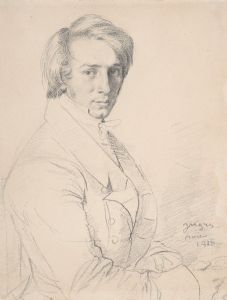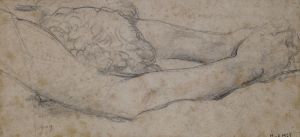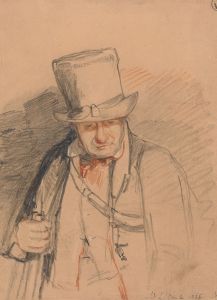
Jean-Joseph Fournier
A hand-painted replica of Jean Auguste Dominique Ingres’s masterpiece Jean-Joseph Fournier, meticulously crafted by professional artists to capture the true essence of the original. Each piece is created with museum-quality canvas and rare mineral pigments, carefully painted by experienced artists with delicate brushstrokes and rich, layered colors to perfectly recreate the texture of the original artwork. Unlike machine-printed reproductions, this hand-painted version brings the painting to life, infused with the artist’s emotions and skill in every stroke. Whether for personal collection or home decoration, it instantly elevates the artistic atmosphere of any space.
Jean-Joseph Fournier by Jean Auguste Dominique Ingres is a portrait painting created by the renowned French Neoclassical artist Jean Auguste Dominique Ingres. Ingres, born in 1780 in Montauban, France, was a prominent figure in the 19th-century art world, known for his precise draftsmanship and his ability to capture the essence of his subjects through portraiture. His works often reflect a meticulous attention to detail and a dedication to the classical traditions of art.
The painting depicts Jean-Joseph Fournier, a figure about whom little is widely known, suggesting that he may have been a private individual or a patron of the arts during Ingres' time. Ingres was known for his ability to capture the personality and status of his sitters, often portraying them with a sense of dignity and poise. This particular portrait is no exception, showcasing Ingres' skill in rendering the human form with both accuracy and elegance.
Ingres' technique in this painting, as in many of his portraits, likely involved the use of fine lines and smooth surfaces, characteristics that are hallmarks of his style. His portraits are often noted for their clarity and the way they convey the textures of fabrics and the subtleties of skin tones. Ingres was a master of using light and shadow to create depth and volume, giving his subjects a lifelike presence.
The composition of the portrait would typically focus on the upper body and face of the sitter, allowing Ingres to emphasize the facial features and expressions that convey the character of the individual. The background in Ingres' portraits is often understated, ensuring that the viewer's attention remains on the subject.
Jean Auguste Dominique Ingres was a student of Jacques-Louis David, another leading figure in the Neoclassical movement. Ingres' work was influenced by the classical ideals of beauty and harmony, and he often drew inspiration from the art of ancient Greece and Rome. Throughout his career, Ingres received numerous commissions from both private patrons and public institutions, solidifying his reputation as one of the foremost portraitists of his time.
The painting of Jean-Joseph Fournier, like many of Ingres' works, would have been highly regarded for its technical excellence and its ability to capture the essence of the sitter. Ingres' portraits remain celebrated for their contribution to the art of portraiture and their reflection of the cultural and social milieu of 19th-century France.
While specific details about the life of Jean-Joseph Fournier and the circumstances of this particular commission may not be extensively documented, the portrait itself stands as a testament to Ingres' enduring legacy as a master portraitist. His ability to blend classical techniques with a keen observation of human character continues to be admired by art historians and enthusiasts alike.





